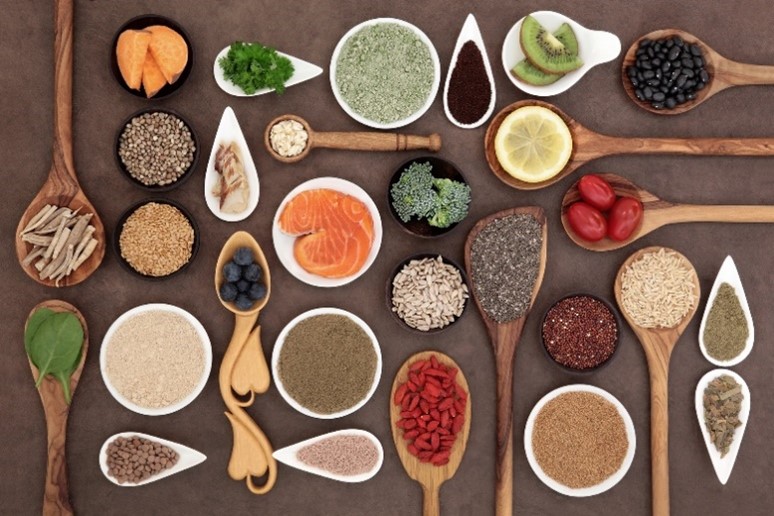Most people know eating fruit and vegetables is good for their health, as they are packed full of the likes of minerals, vitamins and fibre. Not everyone is aware of the benefits it has on the planet. At the start of 2019, a report was published in one of the world’s most renowned scientific journals, The Lancet. This report was based on the findings of nearly 40 scientists from around the globe and is titled: Food in the Anthropocene: The Eat-Lancet Commission on healthy diets from sustainable food systems. It is more commonly known as The Planetary Health Diet, but this shorter title might cause a little confusion. It’s not just about eating for ourselves but it’s about eating for our families, our communities and ultimately our planet.

Image source: Wix
So how does the planetary health diet help humans and their health?
The findings of the report as well as being a scientific article are also a commission to the way we eat and live, in the hope of encouraging us all to eat, live and enjoy life. For many decades, and even now, the Eat Well Guide has been the recommended source relating to nutritional advice for most healthcare professionals. Although some of its elements are still appropriate and similar to the Planetary Health Diet, some are outdated and more harmful than good. So, what does the Planetary Health Diet suggest and why? The biggest element is the Planetary Health Diet suggests your plate should be: “Half full of fruits and vegetables” (as opposed to only a third as suggested by the Eat Well guide). The remaining half should be made up of a range of things, but predominantly whole grains (such as barley, buckwheat, oatmeal and brown rice), plant proteins (such as lentils, nuts, pulses, beans and seeds), unsaturated plant oils, limited meat and dairy and some supplementary sugars and starchy vegetables. This is very different from the Eat Well Guide which suggests basing a third of meals on starchy vegetables and carbohydrates. See the difference in both below. (left – Eat Well Guide, right – Planetary Health Diet).
Image sources: NHS Eat Well Guide & EAT
What are the main findings of the report, suggestions of the diet and why?
The diet is said to be optimal for both human health but also environmental sustainability, by advocating for people to eat locally, whole and appropriately sourced, as well as seasonally and sensibly. One element where the Planetary Health Diet matches the Eat Well Guide is the daily calorie intake, which is suggested as around 2500 per day, but this is dependent on age, sex and the likes. It does not eliminate the likes of meat and dairy food but rather suggests these should be much less than the Eat Well guide suggests, with a plant-forward emphasis along with whole grains and legumes, therefore the Planetary Health Diet could be adapted to those who might be vegetarian or vegan for example.

Image source: Wix
Here are the planetary health diet’s recommendations for food amounts with a startling suggestion:

But why is this Planetary Health Diet of 50% fruits and vegetables so good for human health?
The reason fruits and vegetables are so good for our health is hard to summarise. One reason is the vast amount of phytonutrients that fruits and vegetables contain. Phytonutrients have been studied and proven to have anti-oxidant and anti-inflammatory properties and effects. Many fruits and vegetables will also benefit the microbiome in our gut, ensuring we have a “healthy gut” which plays such a vital role in many aspects of our health such as immunity. As time goes on, more and more experts are starting to move away from disease treatment and towards disease prevention and this is where the planetary health diet is vital. The Doctors Kitchen is a website with the host being a medical doctor, who has begun to appreciate, investigate and advocate for a food as medicine movement. There are many more, such as Living Medicine, and Dr William W. Li’s blog.
We know that obesity along with other non-communicable diseases such as diabetes, heart disease and some cancers can be predominantly diet-related and diet-inducing. A diet of carbohydrates, red meats, sugars, saturated fats and the likes all have a long-term negative effect on health. On the other hand, and again thanks to several studies and years of research, the food as medicine movement is coming more and more to the frontline of healthcare approaches. The Planetary Health Diet suggests that by switching from an unhealthy diet intake to a plant-focused diet, somewhere around 11 million adult deaths can be prevented worldwide.

Is “community growing” the key?
It’s important to note that the Planetary Health Diet is not about all or nothing but about changes that we can all make at an individual level, without perhaps even realising their wider implications and benefits. Something I was shocked to realise via the likes of the Trussell Trust was the number of people in the UK who rely on food banks. Additionally, the Planetary Health Diet suggests over 820 million people globally, go hungry each day. This is where the link between the Planetary Health Diet and its benefits interlinks with community-growing projects and initiatives. Not everyone has the finances to purchase fresh fruit and vegetables (the main composition of the Planetary Health Diet) and community growing can allow access to fresh, local, seasonal fruit and vegetables to all, often for free.
In my previous blog for this website, I spoke about community growing and the benefits this has on health. These included the likes of physical health benefits from gardening, mental health benefits from being in a Green Space as well as social cohesion, a sense of purpose and achievement and the likes, as well as educational and behavioural benefits. These are all before even considering the benefits of the produce that is grown, if eaten and there have been studies as suggested by Edible Estates, that people involved in community growing projects are more likely to eat more fruit and vegetables than those who are not. In fact, the Edible Estates movement shared an extensive list of benefits of community growing projects which was prepared by the Scottish Government in a bit to encourage local authorities to get more involved in the movement

Image source: Wix
Summary
If we adopt more of a plant-based diet as suggested and recommended in the publication Food in the Anthropocene: The Eat-Lancet Commission on healthy diets from sustainable food systems there could and would be a change in the communitiey’s health and well-being alongside an impact on the planet’s health by eating more sustainably and appropriately. Community growing could be the answer to this by providing access to fresh and often free fruits and vegetables to people living in these communities. Those who volunteer at said growing projects will also benefit from the positive outcomes on health and well-being such as a sense of purpose, connection and free physical exercise.
Author
Brian Webster is a registered nurse working as an out-of-hours community nurse and is soon to transition into the role of trainee district nurse. He founded the community growing project in Dundee, Scotland: and is keen to set up a similar project in his new local area in Perthshire, Scotland. He is a member of the BSLM and is really interested in the movement of nurse coaching and how this could be interlinked and key for lifestyle approaches to health
Further Reading:
 Login
Login